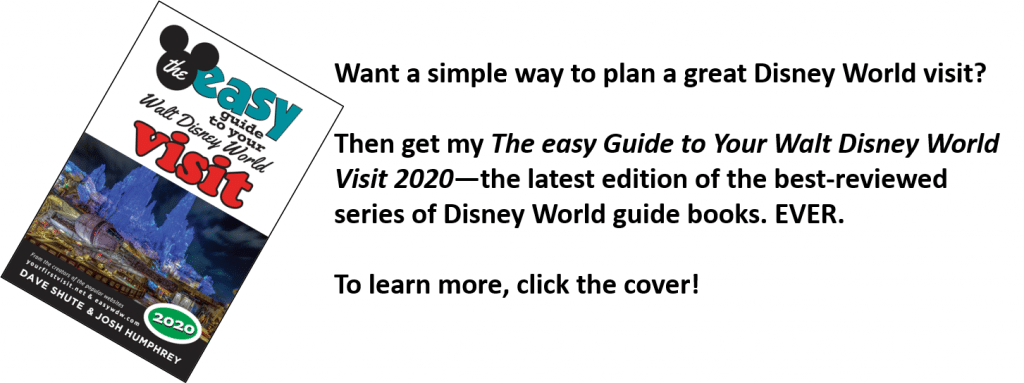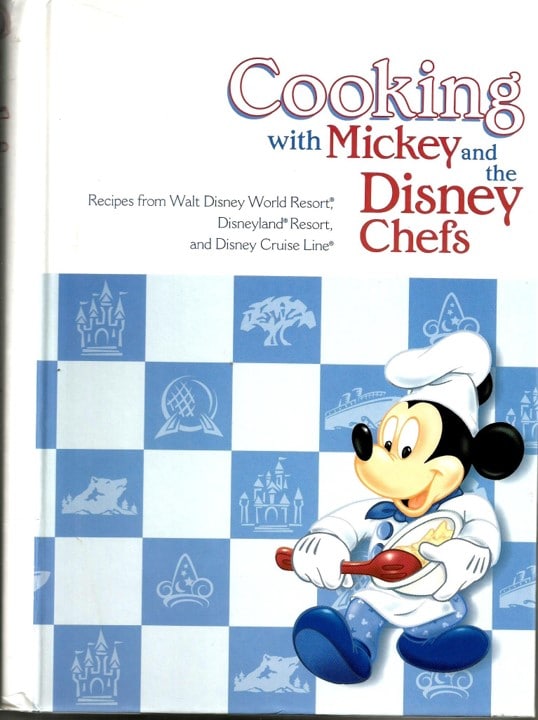Category — A Friday Visit with Jim Korkis
A Friday Visit with Jim Korkis: Christmas Poinsettias at Disney World
Welcome back to Fridays with Jim Korkis! Jim, the dean of Disney historians, writes about Walt Disney World history every Friday on yourfirstvisit.net.
CHRISTMAS POINSETTIAS AT WALT DISNEY WORLD
By Jim Korkis
As soon as Halloween ends, Walt Disney World immediately trades out orange pumpkins for red poinsettias. Every Christmas season, Walt Disney World is adorned with over 100,000 poinsettias artfully arrayed in attractive baskets, impressive towers and various other arrangements. When the holidays are over, the poinsettias are removed and composted.
The poinsettia was first introduced into the United States from Mexico around 1825 by the first U.S. Ambassador to Mexico, Joel Roberts Poinsett. In the early 1900s, it became a popular landscape plant in California, and since then has become the plant most people associate with the holiday season.
On property, the eight foot tall towers which resemble big, red Christmas trees are composed of 170 poinsettias each and have been a traditional favorite at the parks for over two decades. Fourteen of them are displayed property wide with the Magic Kingdom having eleven, Disney’s Hollywood Studios two and one at Epcot.
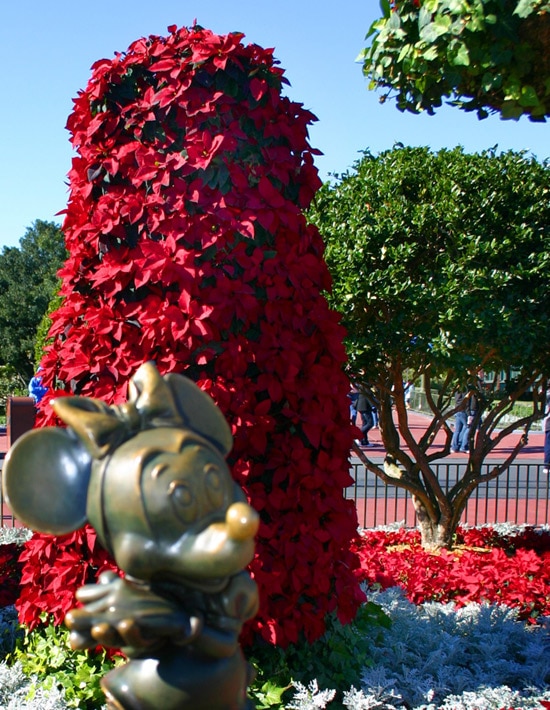
(c) Disney
It takes a full day to assemble just one tower. The towers are fairly intricate structures with tubing for water built into the support work so that no one has to climb up and refresh the plants each day. Once assembled at the tree farm outside of the Magic Kingdom, they are transported by truck to their assigned location where they are hoisted into place by heavy machinery.
Eric Darden, a horticultural area manager, said “You just want guests to get a show like they’re not going to get anywhere else in the world. Every detail that you can add with the plants and towers just helps with that overall effect.”
86,698 poinsettias are placed in flowerbeds and containers around the resort allocated with 9,994 to Disney’s Hollywood Studios, 24,033 to Epcot, 38,543 to Magic Kingdom, 1,500 to the roadways, 11,156 to Disney Springs area and 1,472 to Disney’s Animal Kingdom.
Around property are also 476 poinsettias hanging baskets that include 30 poinsettia balls, and 446 poinsettia skirts or combination baskets. Each poinsettia ball contains as many as 40 poinsettias per basket. Disney’s Hollywood Studios has 163, Epcot has 132, Magic Kingdom has 79, and Disney Springs 102.
Some of these plants are supplied by local growers in Apopka, but the majority comes from Dixie Green in Centre, Alabama.
“We had some friends down in Florida that we knew, and Disney was looking for some certain plants, and our friends couldn’t locate them so they called us,” Dixie Green President Harlan Richardson said, explaining how the partnership with Walt Disney World began over two decades ago.
“Our poinsettias are a better product,” he said. “There, they plant all their products outside, but it’s so warm down there that the plants are softer. Ours, we can let them get cooler at night and that hardens them up, makes them last longer. We have a stouter plant.”
The more rigid plants from Dixie Green live longer and every shipment that leaves Dixie Green is labeled for a specific area of the park.
“When it’s time to ship, we pull the plants according to which specific flower bed or area they go into,” he said. “We pull the plants, put them all on a rolling rack and each rack is marked. When they get the load, they know exactly where those plants are to be planted.”
Richardson said the process of getting ready to ship between 100,000 and 125,000 poinsettias to the park gets underway in July when planting begins and culminates with semi-trucks filled with potted poinsettias.
“We have a few that go down in December, but the majority of them are already down there,” he said. “They use them at all of the parks and also on their cruise ships.”
* * * * *
Thanks, Jim! and come back next Friday for more from Jim Korkis!
In the meantime, check out his books, including his new Halloween-appropriate Vault of Walt Volume 9: Halloween Edition, and his other new book, Hidden Treasures of the Disney Cruise Line.
Follow yourfirstvisit.net on Facebook or Twitter or Pinterest!!
December 4, 2020 No Comments
A Friday Visit with Jim Korkis: Cooking with Mickey and the Disney Chefs
Welcome back to Fridays with Jim Korkis! Jim, the dean of Disney historians, writes about Walt Disney World history every Friday on yourfirstvisit.net.
YOUR PERSONAL DISNEY LIBRARY (34)
By Jim Korkis
- Cooking with Mickey and the Disney Chefs by Pam Brandon
Some of the difference in a Disney theme park experience is the food, and the memories created by the meals enjoyed especially when shared with family and friends. The variety of options to sate an appetite seem almost endless, from gourmet upscale to traditional comfort food with a twist.
Many food offerings are unique to the Disney theme parks, and many Disney fans can effectively argue that having a Monte Cristo sandwich at the Blue Bayou, or Cheddar Cheese Soup at Le Cellier Steakhouse, or Tonga Toast at Kona Café, just somehow tastes different than anywhere else, and it is not just the ambience of the location.
Of course, that is one of the challenges with Cooking with Mickey and the Disney Chefs as well. Despite how accurate the description or adept the home chef, the end result will taste very similar but not quite exactly as it is served at the parks. Like any good chef, the Disney chefs will often modify the ingredients on the spot based on taste, smell and look.
My grandmother drove me crazy because every time I tried to record her making her famous Greek wedding cookies (Kourabiedes), she did little different things each time. She learned the recipe as a young girl and would never write it down. Despite my many attempts, I have never been able to quite duplicate them and if I blinked or turned away for a second, she did something that I missed writing down.
Released by Disney Editions in 2004, Cooking with Mickey and the Disney Chefs has eighty pages of recipes from Walt Disney World, which is one of the reasons I have chosen to review it. In addition, there are nearly an additional eighty pages devoted to recipes from the Disneyland Resort and the Disney Cruise Line.
Author Brandon wrote, “The aim of this cookbook is to present favorite recipes that are ‘home-cook’ friendly – though the Disney chefs must serve hundreds, all of the recipes here have been adapted to family-size servings, and tested for home use.”
Pam Brandon has been involved with several best selling Disney-related cookbooks over the years. She is a food and travel writer and managing editor of Edible Orlando magazine.
She is also food columnist for the Palm Beach Post, the Orlando Sentinel and more, including being a consultant to Birnbaum’s official Disney guidebooks. In addition to Disney cookbooks, she has written other recipe and cookbooks, primarily centering on Florida. She is often identified as Disney Parks Food Writer.
Of course not all the favorite Walt Disney World recipes are included in the book, one of the reasons for so many other Disney cookbooks by Brandon, such as A Cooking Safari with Mickey: Recipes from Disney World’s Animal Kingdom.
One of the complaints that some Disney fans have about Cooking with Mickey and the Disney Chefs is that it features no photos of the many dishes. While pleasingly laid out, the interior is just the text of the recipes. There is no additional information about the location where it is served or the recipe itself.
Many favorite dishes find recipes here, including both the Cobb Salad and the Grapefruit Cake with Cream Cheese Frosting available at The Hollywood Brown Derby restaurant at Disney’s Hollywood Studios. Being a Disney historian and old movie fan, I regretted that the amusing and intriguing stories behind the creation of those particular two items were not included, especially since Walt Disney himself enjoyed both of those items as a frequent diner at the Hollywood restaurant.
However, I content myself that the book offers those official recipes as served at the park, along with so many others.
* * * * *
Thanks, Jim! And come back next Friday for more from Jim Korkis!
In the meantime, check out his books, including his new Halloween-appropriate Vault of Walt Volume 9: Halloween Edition, and soon-to-be-released Hidden Treasures of the Disney Cruise Line.
Follow yourfirstvisit.net on Facebook or Twitter or Pinterest!!
November 28, 2020 No Comments
A Friday Visit with Jim Korkis: “Ah Ha!”s at Walt Disney World
Welcome back to Fridays with Jim Korkis! Jim, the dean of Disney historians, writes about Walt Disney World history every Friday on yourfirstvisit.net.
AH HA!S AT DISNEY WORLD AND THE INDIANA JONES ROPE PULL
By Jim Korkis
While many Walt Disney World guests are obsessed with finding Hidden Mickeys throughout the parks and resorts, they may not be aware of what some Imagineers call “Ah Ha!”s.
Those things are not marked on guide maps and are there for people to serendipitously discover as they are enjoying their day at Walt Disney World.
The first “Ah Ha!” that was ever pointed out to me by an Imagineer was the heart in the cement outside of Tony’s Town Square Restaurant, with cupid’s arrow going through it and two sets of paw prints.
Obviously, especially being outside of Tony’s and in an area of the park devoted to the turn-of-the-century time period, it was meant to reference Lady and the Tramp who made a similar heart in the animated feature. When it was pointed out to me, I actually did go, “Ah!”
These are not just images but sometimes an interactive experience. In 1999, in the Magic Kingdom’s Tomorrowland, a Metrophone booth from the Galactic Communications Network (GCN) was installed.
By randomly punching several numbers brought up a loop with one of nine possible hilarious one-sided conversations from Rocket Realty, Sonny Eclipse’s agent Johnny Jupiter, Earth Crust Pizza, Intergalactic Movie Line, Psychic Robots Network, and more, including the time and weather from Corona Borealis of the Tomorrowland News Network. It was quietly removed in recent years with some people never even knowing it existed.
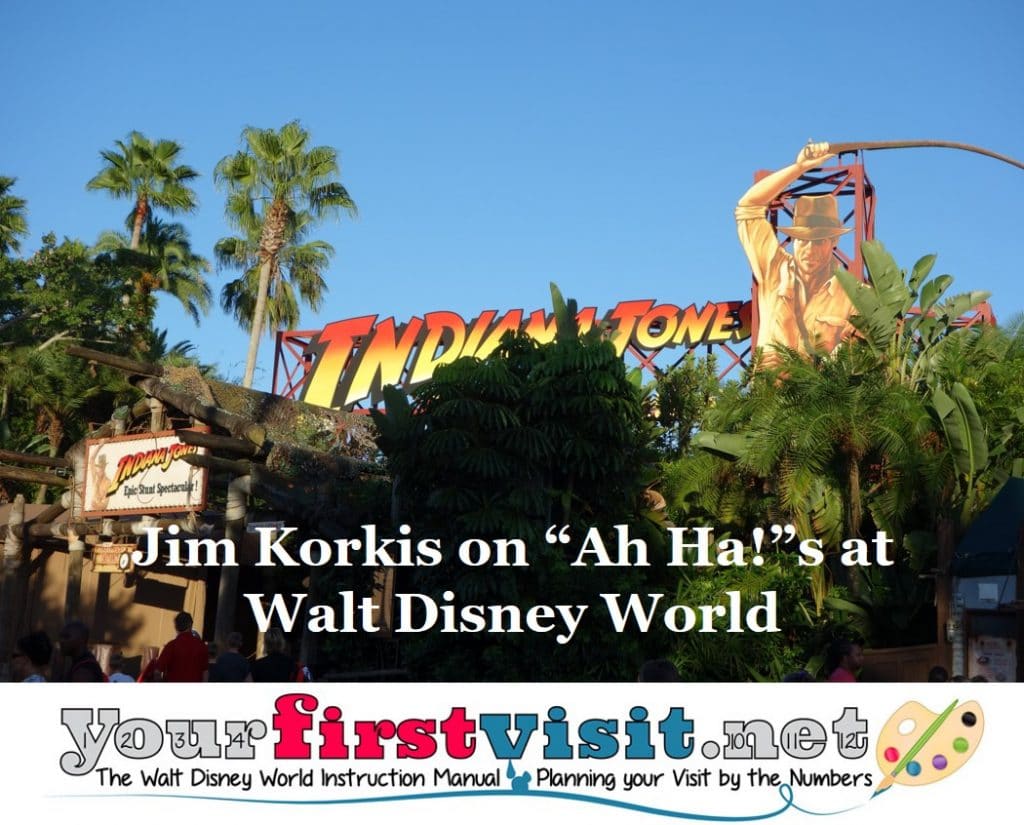
To the left of the entrance to the Indiana Jones Epic Stunt Spectacular show is some sort of excavation site over an ancient well. There is a large wooden sign next to it declaring: “Warning! Do NOT Pull Rope!” The word “Not” has a line going through it.
Of course, the rope is within easy reach of the guests and the temptation is to see what might happen. Pulling on the rope sometimes elicits no response and other times an echoey voice from down in the well yelling, “Hey, what’s going on up there?” or the lengthy scream of someone falling to the bottom.
According to the Imagineers, that person is the very British Dr. Dunfor Pullit, an archeologist who is supported by the rope beneath the sarcophagus stone.
Repeated pulling on the rope can generate some different responses:
“Leave off the rope old chap, be a good fellow. I have a frightfully valuable artifact down here. Oh no [crash.] I HAD a terribly valuable artifact down here.”
“I say, leave off the rope old chap, be a jolly good sport. I say! Uh oh… oh no… blimey [fall, thud]”
“I say quit mucking about up there. Oh blast! Not again [fall, crash].”
“Blast it all, you don’t want to pull the rope. [crash] Oh dear.”
“Careful while I translate this… Let’s see, um, ‘twenty years of,’ ah, ‘sorrow to the,’ ah, ‘destroyer of this vessel!’ ” [crash.]”
Are there any that I missed? Of course, there is a similar well in the interior queue for Disneyland’s Indiana Jones Adventure: Temple of the Forbidden Eye.
* * * * *
Thanks, Jim! and come back next Friday for more from Jim Korkis!
In the meantime, check out his books, including his new Halloween-appropriate Vault of Walt Volume 9: Halloween Edition, and his other new book, Hidden Treasures of the Disney Cruise Line.
Follow yourfirstvisit.net on Facebook or Twitter or Pinterest!!
November 20, 2020 No Comments
A Friday Visit with Jim Korkis: The Story Behind Disney’s Riviera Resort
Welcome back to Fridays with Jim Korkis! Jim, the dean of Disney historians, writes about Walt Disney World history every Friday on yourfirstvisit.net.
DISNEY’S RIVIERA RESORT: WHAT’S THE STORY
By Jim Korkis
One of the things that set the Disney resort hotels apart from other non-Disney accommodations is that they feature a storyline or theme that is consistently reflected in the design choices throughout the location.
Sometimes that theming is extremely immersive like at Wilderness Lodge and other times like at the Disney Riviera Resort it is done in a more superficial way, more of a suggestion rather than a commitment. The resort is the 15th Disney Vacation Club resort and the first stand-alone DVC to be built in over eight years.
So what was the story behind selecting the theme of Disney’s Riviera Resort? It was based on a little documented European trip that Walt Disney, his brother Roy and their wives took in 1935 that took them through England, France, Germany and Italy.
For those wanting to learn more, it is highly recommended to pick up a copy of Disney’s Grand Tour: Walt and Roy’s European Vacation, Summer 1935 by Didier Ghez that goes into that experience in great detail.
For instance during that trip, Walt brought back with him hundreds of books including children’s books with illustrations of little people, bees, and small insects that he hoped would inspire the artists at his Burbank Studio. Those nearly 700 books from that trip became the foundation of the Disney Studio library that began that same year under the supervision of Helen Ludwig Hennesy.
That is the reason for the resort having the relaxing study called the Voyageurs’ Lounge with its shelves filled with books, all foreign editions from the 1930s, including several Disney storybooks.
A display case features an original Charlotte Clark stuffed Mickey Mouse doll from that time period and a similar one is shown in photos of Walt and his wife Lillian from the trip. Near the doll is a hat representing the fedora that Walt often wore, including on this trip, and a photo next to it shows him wearing such a hat.
In the hallway leading to the lounge are black-and-white photos on the wall from Walt’s holiday. Many of these photos do not appear in any book, like Walt Disney on June 13, 1935 playing with penguins at the London Zoo in a photo by Edward G. Malindine for the Daily Herald.
Another set of such photos decorate the wall in Primo Piatto (Italian for “first plate”) the principal quick-service venue on the first floor near the two pools. While I have spent time standing and studying these pictures in both locations, I have noticed that Disney guests generally ignore them or even question their significance.
The resort only prominently features French and Italian influences to reference the Rivera rather than Walt’s other travels.
Inspired by the cliffside restaurants of the Riviera, Topolino’s Terrace is a reference to Mickey Mouse’s name in Italian: Topolino or “little mouse”. In keeping with the emphasis on European art, for the character breakfast at this location the costumed performers are attired as Mickey the artist, Minnie the poet, Donald the sculptor, and Daisy the dancer.

The theme seems less Walt’s visit to the Rivera in the 1930s but just an overall “European Disney” concept that extends to modern times including foreign movie posters of Disney animated films on the walls in the first floor hallway near the formal lawn.
Yet there are odd lapses. A framed picture of Lady and the Tramp eating spaghetti is meant to suggest Italy even though the story is wholly American.
While the story theme is not as immersive or consistent as some other Disney resort hotels like Disney’s Boardwalk, the concentration on the Disney connections to Europe is still appealing.
* * * * *
Thanks, Jim! There’s more on Disney’s Riviera Resort here.
And come back next Friday for more from Jim Korkis!
In the meantime, check out his books, including his new Halloween-appropriate Vault of Walt Volume 9: Halloween Edition, and his other new book, Hidden Treasures of the Disney Cruise Line.
Follow yourfirstvisit.net on Facebook or Twitter or Pinterest!!
November 13, 2020 No Comments
A Friday Visit with Jim Korkis: The Purple Signs of Walt Disney World
Welcome back to Fridays with Jim Korkis! Jim, the dean of Disney historians, writes about Walt Disney World history every Friday on yourfirstvisit.net.
THE SIGNS OF WALT DISNEY WORLD
By Jim Korkis
In many ways, Walt Disney World has always been a seamless experience to the point that for years cast members joked that guests left their brains in their cars when they visited.
Walt Disney World works very hard at making things as seamless as possible and a lot of thought, effort and planning goes into making certain decisions.
Why are Walt Disney World traffic signs purple and not the typical green and white that are seen on the roadways leading into the popular vacation destination?
The signs scattered around Walt Disney World are the work of Sussman/Prejza & Co, a Los Angeles design firm that was hired in 1989 to tackle the design for the wayfinding and traffic signs of Walt Disney World and EuroDisney (now Disneyland Paris).
Walt Disney World encompasses an area larger than the city of San Francisco and all visitors arrive at the property by road—at least until perhaps an expansion of the Sun Rail or extension of Brightline happens sometime in the future.
Sussman/Prejza’s task was to develop a signing system for people in vehicles that would be unique in spirit, clean, easy to follow, and capable of being expanded as the area continued to grow.
The theme park was divided into several major districts. A hierarchy of signs was established to first lead visitors toward a specific district, and once there, toward a distinct destination. The 1,000 sign system includes large freeway signs, major and minor road directionals, regulatory signs, gateways, and bus graphics.
The firm was best known for its work on the design and signage for the 1984 Olympics in Los Angeles, which featured similarly bold color palettes as the ones chosen for Walt Disney World. This was how the firm attracted the attention of the Walt Disney Company in the first place, with so many Disney executives and Imagineers living in Los Angeles.
As for the colors on Walt Disney World traffic signs, according to designer Deborah Sussman, the firm drew inspiration from the big cheese himself, Mickey Mouse. The black, red, and yellow colors used on the signs were chosen to mimic the color palette of Mickey Mouse.
The signs were further fleshed out with complimentary colors–which are colors that lie on the opposite side of the color wheel. Red’s complementary color is green, and yellow’s complementary color? Purple.
Using those complementary colors makes the signs easier to read and, of course, a sign that was prominently black would be difficult to read at night. A traffic sign that was primarily yellow would be difficult to see clearly during the day and one that was largely red would detract from warning signs that were red.
Different colored flags were put out around the property to survey guests to see which color they best remembered. Apparently the purple and red flags had a higher instance of being clearly recalled, and that helped confirm the final color choices.
In addition, purple helps define when a guest is actually on Walt Disney World property because it is such a different color than the typical road signs. As usual, no detail is too small to be considered when it comes to defining Disney.
Why is Disney able to control the color of road signs?
Disney has their own governing jurisdiction, called the Reedy Creek Improvement District. The district is responsible for overseeing the public services of the property, including the fire department, EMS, water treatment, electric, roadways and bridges.
With that authority, it was no problem to decide to make the road signs purple. Guests give little thought today about the different color other than perhaps thinking, “I am on WDW property”. Like so many other things, it is just another thing that is accepted and not questioned.
* * * * *
Thanks, Jim! And come back next Friday for more from Jim Korkis!
In the meantime, check out his books, including his new Halloween-appropriate Vault of Walt Volume 9: Halloween Edition, and his other new book, Hidden Treasures of the Disney Cruise Line.
Follow yourfirstvisit.net on Facebook or Twitter or Pinterest!!
November 6, 2020 No Comments
A Friday Visit with Jim Korkis: The Ghosts of Walt Disney World
Welcome back to Fridays with Jim Korkis! Jim, the dean of Disney historians, writes about Walt Disney World history every Friday on yourfirstvisit.net.
THE GHOSTS OF WALT DISNEY WORLD
By Jim Korkis
Reportedly at Walt Disney World, a young boy rides in a doombuggy in the Haunted Mansion and leans out to smile at the riders behind him. However, when cast or guests try to locate him, he cannot be found.
WDW’s Pirates of the Caribbean is supposedly home to a construction worker named George who died in the attraction. Cast members say “good morning” and “good night” to him over the PA system each day to prevent him from causing mischief. If they don’t, the ride has been claimed to stop unexpectedly at times or have problems with lighting.
Some even claim that a smiling Roy O. Disney has been seen walking down WDW’s Main Street.
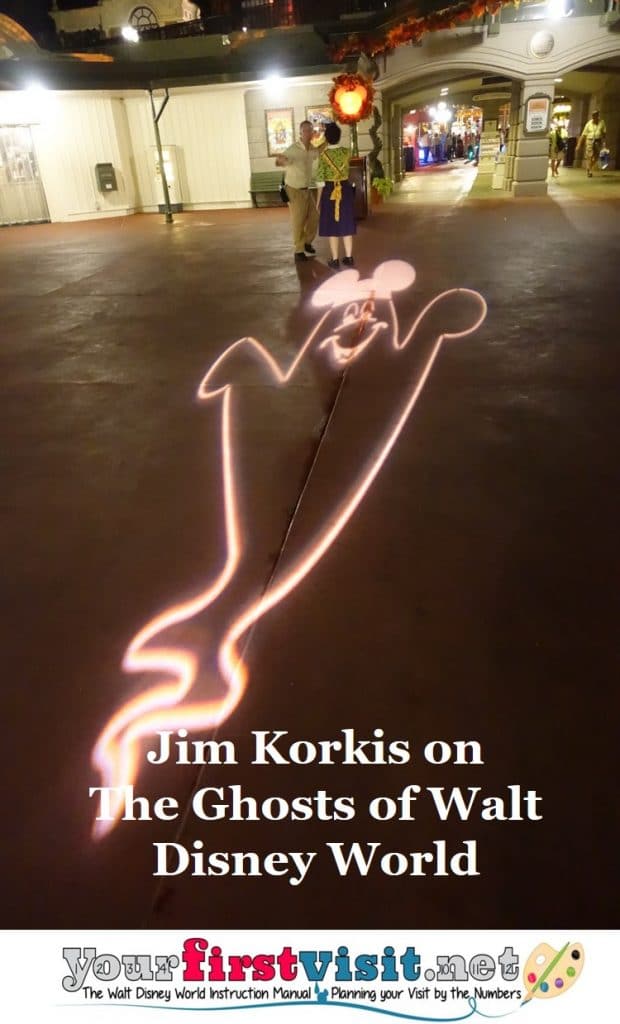
Of course, we also know that there are 999 happy haunts in the Haunted Mansion, but few guests who ride the attraction realize that briefly they become one themselves.
In 1957, Disney Legend Anderson developed four story concepts for the Haunted Mansion, all of which feature elements reflected in the final version of the attraction that was eventually opened at Disneyland on August 9, 1969.
According to Anderson’s best known storyline, a well-known and feared pirate captain quietly retired to private life in a seaside community, like the famed Captain Henry Morgan. He changed his name and used some of his ill-gotten booty to establish himself as a respected and prosperous man. To make his life even more complete, he chose a lucky eighteen-year-old to be his bride and bear him many children.
The only restriction he gave her was to stay out of the attic of their magnificent mansion. The curious girl couldn’t resist and, on their wedding day before the ceremony, but dressed in her wedding gown, she snuck up into the cluttered attic and found a locked trunk that she forced open.
Inside the trunk were souvenirs and documents from the man’s previous life. The pirate captain caught her in the attic and, enraged that his secret might be revealed to the community by this foolish girl, he tossed her out the window to her death.
In the Haunted Mansion attraction that was finally built, guests actually relive this experience of being tossed out the window. Next time, look to your right as you leave the attic through the window and you will see that the shingles on the roof of the mansion do not match the ones on the outside of the mansions at Disneyland or Walt Disney World. Like a medium, you have become the girl and see what she saw, including the house from which she fell to her death.
That’s also the reason you are falling backward as you drop down just as she did. The caretaker at the bottom is not scared by the graveyard but by you since you are now the final ghost to enter it so that there will be a 1,000 happy haunts. He is looking at you and shaking not the graveyard filled with ghosts.
The girl’s ghost haunted her fiancé so mercilessly that the only way he could find peace was by hanging himself. However, their passions were so intense that their spirits were bound to the mansion for all eternity. Their continuing struggle, even after death, attracted other ghosts, including some who came to celebrate a wedding that will never be held.
Now with the changes to the attic story where Constance Hathaway dispatched her wealthy husbands with an axe, that original storyline has been changed significantly.
* * * * *
Thanks, Jim! And come back next Friday for more from Jim Korkis!
In the meantime, check out his books, including his new Halloween-appropriate Vault of Walt Volume 9: Halloween Edition, and his other new book, Hidden Treasures of the Disney Cruise Line.
Follow yourfirstvisit.net on Facebook or Twitter or Pinterest!!
October 30, 2020 No Comments

